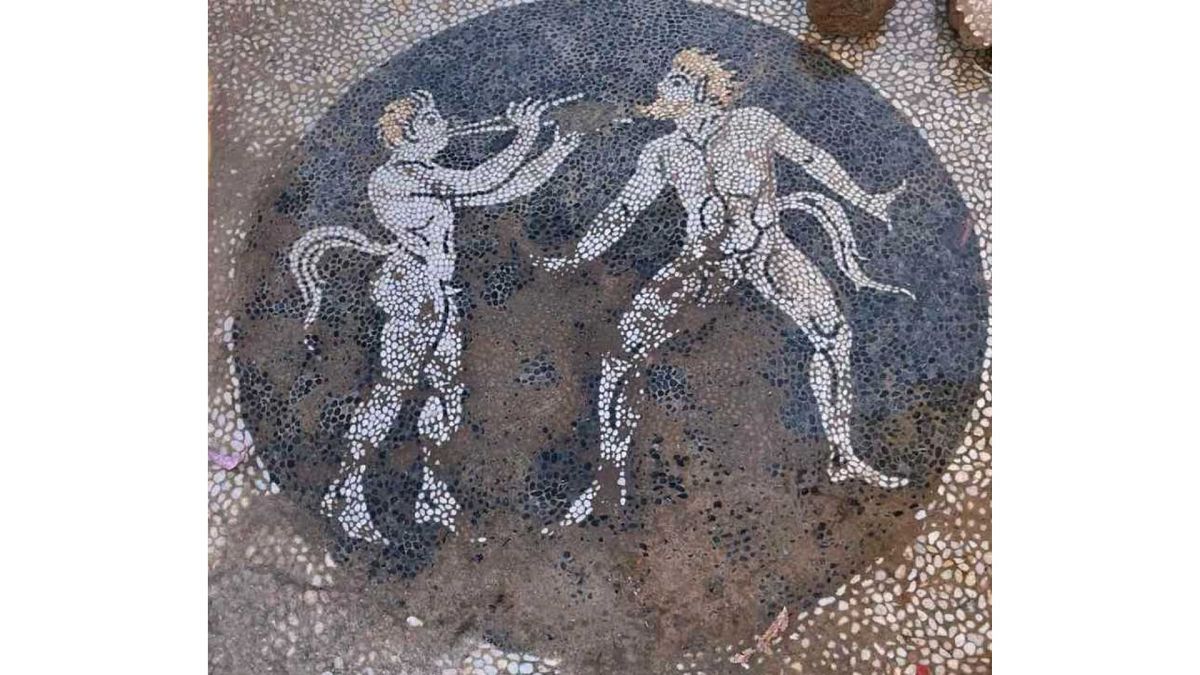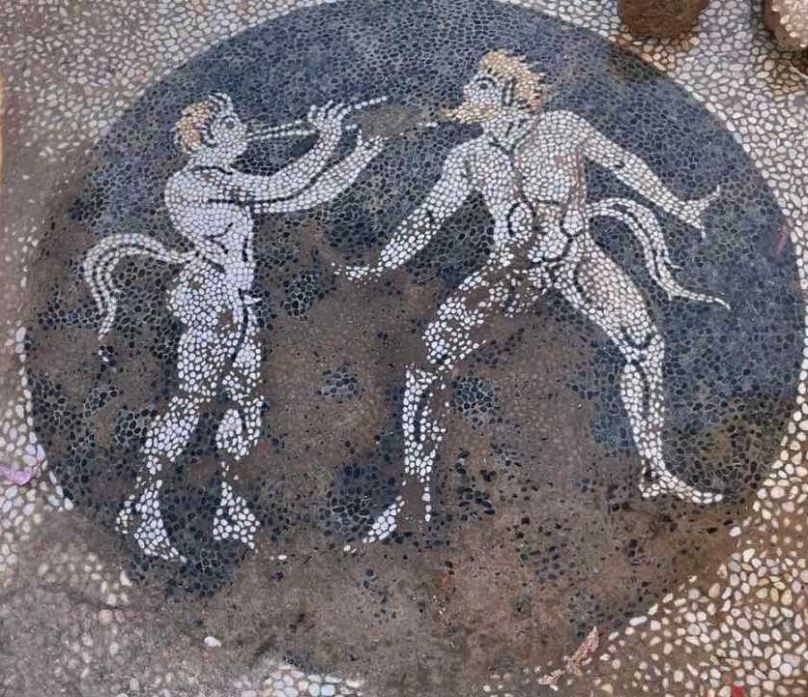Each finding has shed light on different aspects of ancient civilisations and their culture. Here’s why they are significant.
It’s been a bumper week for archaeological discoveries in Europe, with a Greek mosaic and an Etruscan temple being unearthed and new research released on ingots found in Spain.
Each finding has shed light on different aspects of ancient civilisations and their culture. Here’s why they are significant.
Archaeologists discover 2700-year-old Etruscan temple in Tuscany
Archaeologists in the Italian region of Tuscany have unearthed a 2700-year-old Etruscan temple at the Sasso Pinzuto necropolis.
The cult building is one of the largest of its kind measuring 6.2 by 7.1 metres.
The excavation was carried out by the Centre for Ancient Mediterranean and Near Eastern Studies (CAMNES) in collaboration with the University of Naples Federico II.
The team found tuffaceous opus quadratum foundations (an ancient Roman construction technique using squared blocks of stone) of a rectangular structure, known as an oikos meaning house of the deity.
The discovery will shed light on funerary cults in Tuscania during the Archaic period. Nearby, burial mounds and trenches for cult activities were also found.
"In all likelihood, the Sasso Pinzuto oikos will become a reference for funerary cults in Archaic Etruscan necropolis," said Professor Alessandro Naso of the University of Naples.
The Sasso Pinzuto site has been under excavation since the mid-19th century and is home to over 120 chamber tombs dating from as early as the 7th century BC.
Ancient Greek mosaic of naked satyrs discovered on Evia
On the Greek island of Evia, archaeologists have uncovered a mosaic floor which was stumbled upon during works to install water pipelines.
The modern town of Eretria is home to the remains of an ancient Greek city dating from the middle of the first millennium BC.
The remarkable artwork depicts two naked satyrs. The figures are half human, half animal, with goat or horse-like features including tails, pointed ears and horns.
In Greek mythology, satyrs were human-animal hybrid spirits closely connected to the cult of Dionysus, the god of fertility, wine, spiritual ecstasy and wild frenzy.
In the mosaic, one satyr is playing a double flute while the older, bearded companion is dancing.
The mosaic was discovered inside a house from the 4th century BC which would have stood in the heart of the ancient city and was likely owned by a wealthy family.
The mosaic is in "an excellent state of conservation" and the pebbled design "gives realism and vitality to the figures of the show," according to a statement from the Greek Ministry of Culture.
Researchers say lead poisoning played a role in the fall of the Roman Empire
During works to lay a gas pipeline in Spain, a treasure trove of Roman lead ingots was discovered.
The find in northern Cordoba gives an insight into why the commerce of the toxic metal may have been a factor in the empire’s downfall.
Three triangular ingots weighing between 24kg and 32kg were unearthed over the last century during construction of the Maghreb-Europe gas pipeline.
New research published in the Journal of Roman Archaeology has concluded that this site was the main centre of lead smelting in the ancient Western world.
During the Roman Empire, the metal was used to make cooking equipment and water pipes.
Some affluent Romans also sweetened their wine with lead acetate, unknowingly poisoning themselves.
Some historians believe that the frequent cases of lead poisoning of the empire’s rulers contributed to its eventual collapse.
















